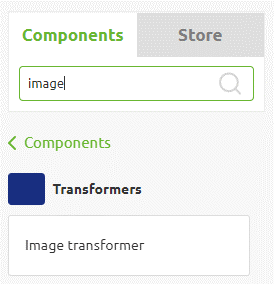Image Transformations
In most cases, you will transform XML messages to other XML messages, or you will transform JSON or EDI messages in another of these formats. However, sometimes you want to perform an image transformation. With this image transformation you can transform images in certain formats to another format (i.e. png). This can come in handy when you want to standardize the image format before using it further downstream in your business application(s).
Should you have any questions, please get in touch with academy@emagiz.com.
1. Prerequisites
- Expert knowledge of the eMagiz platform
2. Key concepts
This microlearning focuses on performing image transformations in eMagiz.
With image transformation, we mean transforming the raw data that represents an image to another image format.
- Read the helptext of the component to understand which formats are supported
- Ensure the input image is supplied in the correct format
- Ensure you wrap the output image in something if you want to do additional transformations on the data further downstream
3. Image Transformation
In most cases, you will transform XML messages to other XML messages, or you will transform JSON or EDI messages in another of these formats. However, sometimes you want to perform an image transformation. With this image transformation you can transform images in certain formats to another format (i.e. png). This can come in handy when you want to standardize the image format before using it further downstream in your business application(s).
Before we dive into the specifics of how to configure this let us first consider the following:
- Read the helptext of the component to understand which formats are supported
- Ensure the input image is supplied in the correct format
- Ensure you wrap the output image in something if you want to do additional transformations on the data further downstream
When turning to the Create phase of eMagiz, we need to open the flow and enter "Start Editing" mode to add the component we need. For example, in the left panel, you can search for "Image". This will yield the following result.

4. Assignment
Check out which of the XPaths we have discussed today can be found within your project.
This assignment can be completed within the (Academy) project you created/used in the previous assignment.
5. Key takeaways
Some of the very complex XPath options are:
- matches
- replace
- tokenize
6. Suggested Additional Readings
If you are interested in this topic and want more information on it, please read the help text provided by eMagiz and read more information on the following links:
- http://www.xsltfunctions.com/xsl/fn_matches.html
- http://www.xsltfunctions.com/xsl/fn_replace.html
- http://www.xsltfunctions.com/xsl/fn_tokenize.html
7. Silent demonstration video
As this is more of theoretical microlearning, there is no video accompanying the microlearning.
